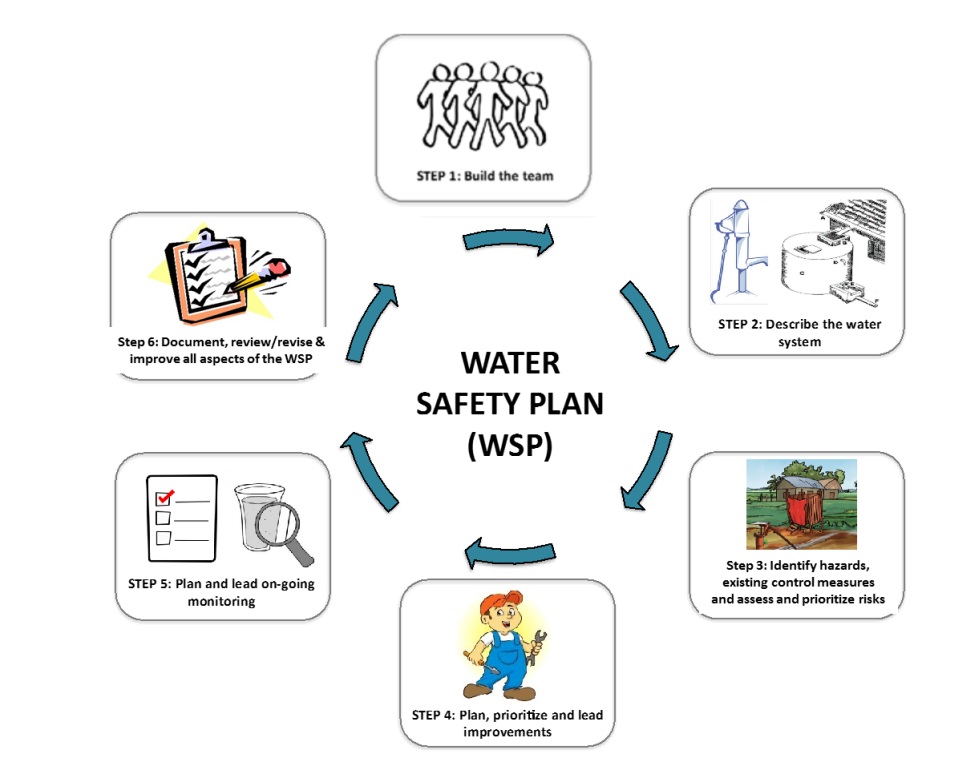
Drinking water supply is a preeminent to public health, environmental protection, quality of life, economic activity, and sustainable development. Many disasters are being recorded due to poor water quality every day. In this case, it is essential to assure safe water demand through continuous enhancement and improvement of all practices and processes related to the water supply. The Water Safety Plan (WSP) concept has become a globally recognized and accepted approach to drinking water supply management and operation. This study aims at reviewing the WSP risk management approach around the world. In addition, the four success factors of WSP implementation are discussed. The benefits, difficulties, as well as recommendation from recent studies that implemented WSP is presented. Improving water quality and operational efficiency were the main benefits whereas lack of staff training and insufficient time and fund were the main challenges for effective WSP implementation. According to a literature scan, the water utilities in Arab gulf region countries do not implement WSP, thus, the author encourages water utilities in these countries to conduct WSP to improve water quality management.
Total file downloads: 10